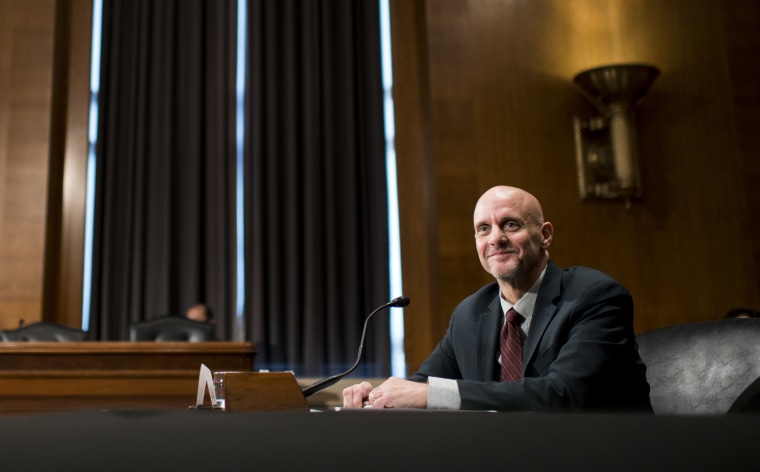Donald Trump seemed eager to make a "breakthrough" coronavirus announcement ahead of the Republican National Convention, so on Sunday afternoon, the president did exactly that. Trump appeared in the White House briefing room to announce that his administration had given emergency approval to using convalescent plasma to treat COVID-19 -- ignoring concerns raised by leading scientists.
But as part of the rollout, Team Trump kept pointing to a specific statistic. The president, for example, told reporters that using plasma from those with coronavirus antibodies "has proven to reduce mortality by 35 percent," which he described as "a tremendous number." Health and Human Services Secretary Alex Azar added, "I just want to emphasize this point because I don't want you to gloss over this number. We dream, in drug development, of something like a 35 percent mortality reduction. This is a major advance in the treatment of patients. This is a major advance."
Dr. Stephen Hahn, commissioner of the Food and Drug Administration, echoed the line, arguing, "A 35 percent improvement in survival is a pretty substantial clinical benefit. What that means is -- and if the data continue to pan out -- 100 people who are sick with COVID-19, 35 would have been saved because of the administration of plasma."
When a reporter questioned whether he was over-selling the efficacy of the treatment, Hahn added, "If you're one of those 35 out of 100 people who these data suggest or show survive as a result of it, this is pretty significant for that person and their family."
It wasn't long before the truth became obvious: Team Trump was wildly hyping incomplete data by focusing on a subgroup of hospitalized patients. The New York Times reported overnight:
What's more, many experts -- including a scientist who worked on the Mayo Clinic study -- were bewildered about where the statistic came from. The number was not mentioned in the official authorization letter issued by the agency, nor was it in a 17-page memo written by F.D.A. scientists. It was not in an analysis conducted by the Mayo Clinic that has been frequently cited by the administration.
Dr. Walid Gellad, who leads the Center for Pharmaceutical Policy and Prescribing at the University of Pittsburgh, added, "For the first time ever, I feel like official people in communications and people at the F.D.A. grossly misrepresented data about a therapy."
It was problematic enough that the emergency-authorization decision raised red flags for possibly having been politicized, but Team Trump's willingness to peddle a statistic that fell apart almost immediately made the mess quite a bit worse.
For his part, Hahn walked back his own rhetoric last night, and conceded that the criticisms are "entirely justified." As best as I tell, Trump and Azar have not made similar public concessions, at least not yet.
But given Trump's apparent eagerness to bully the FDA into submission, plenty of questions linger. How did Hahn, Azar, and the president manage to flub the statistic in the first place? To what degree are decisions like these being influenced by Trump's re-election strategy?
And what are the consequences of politicized science?
